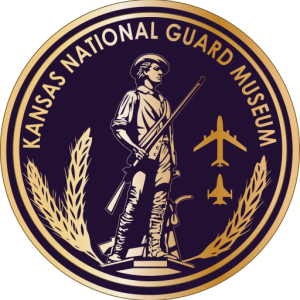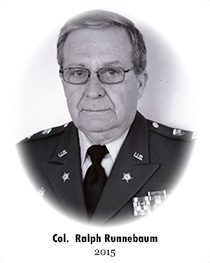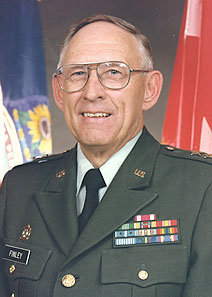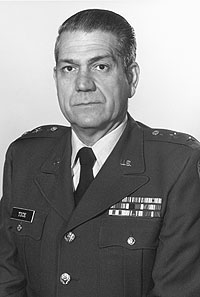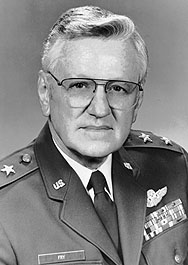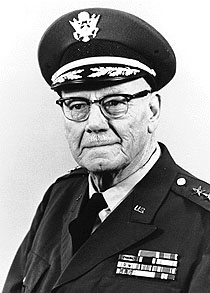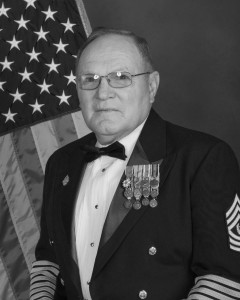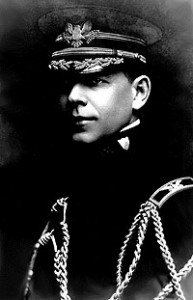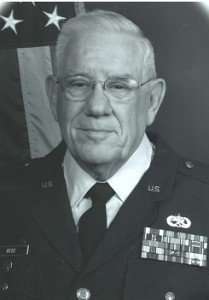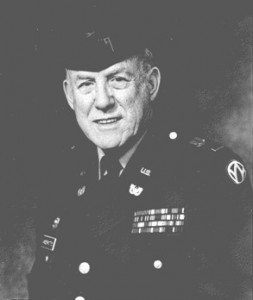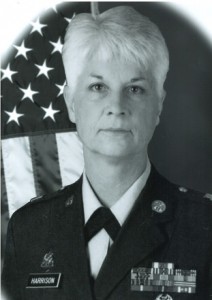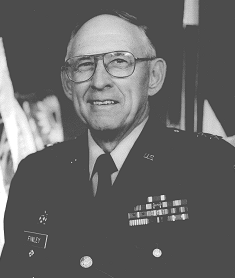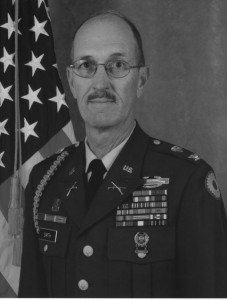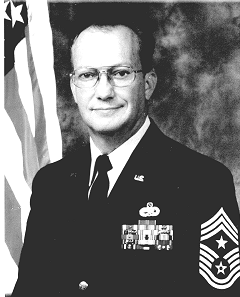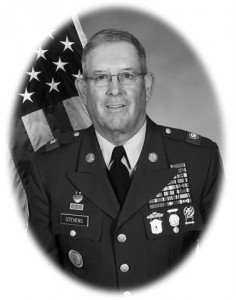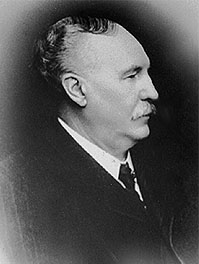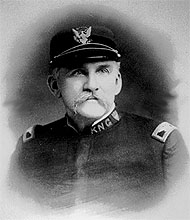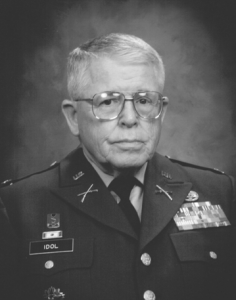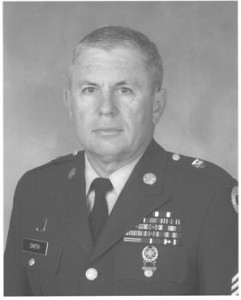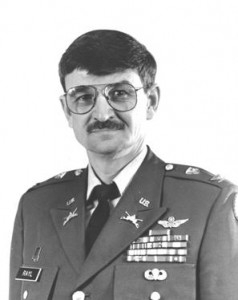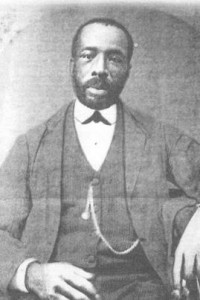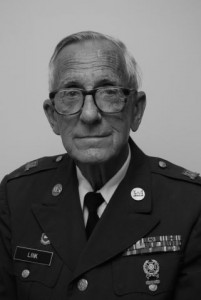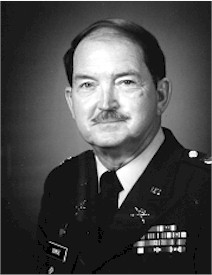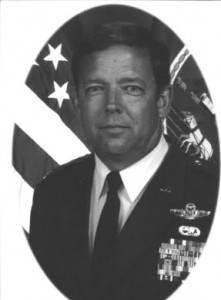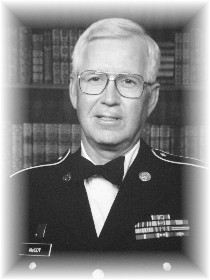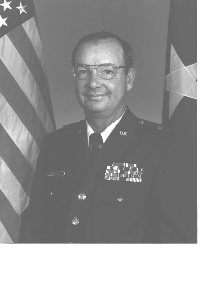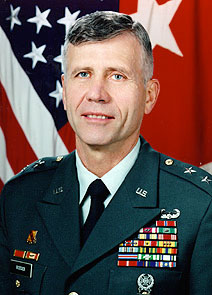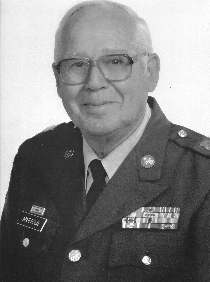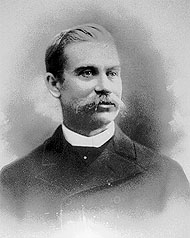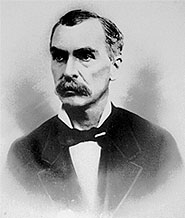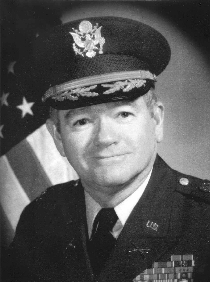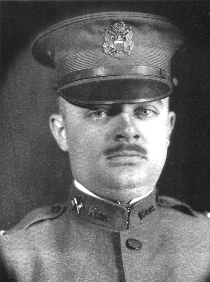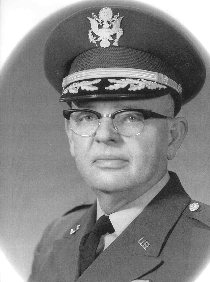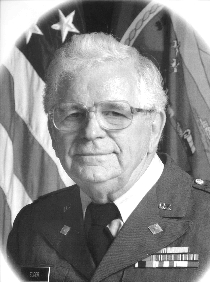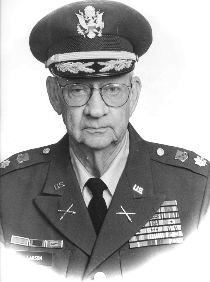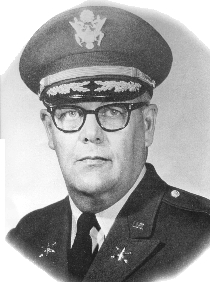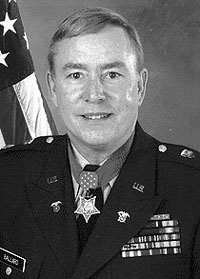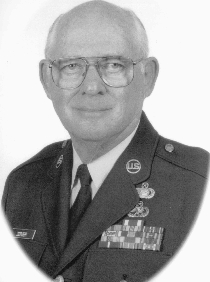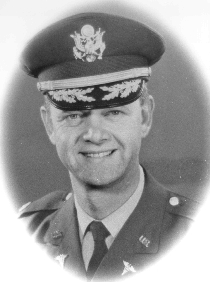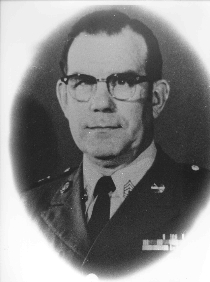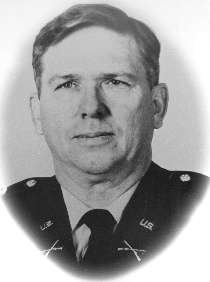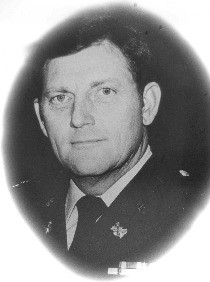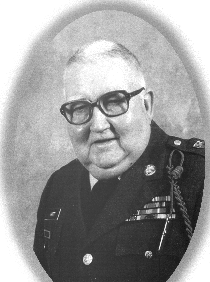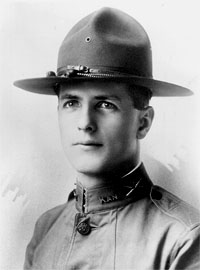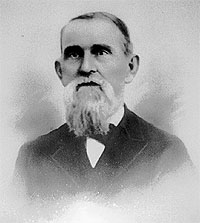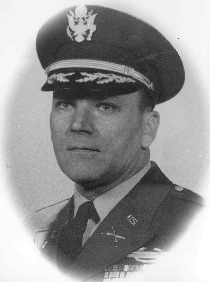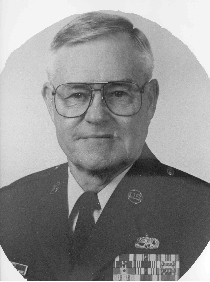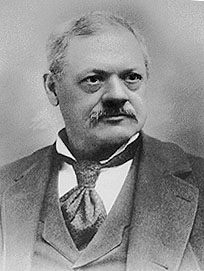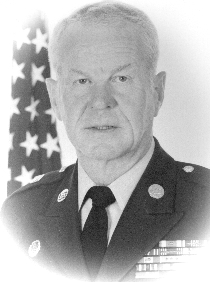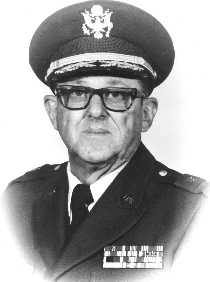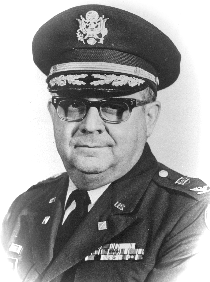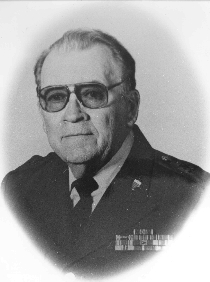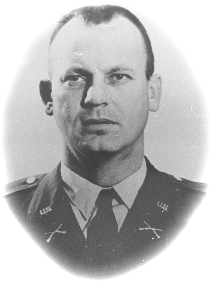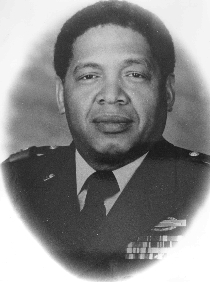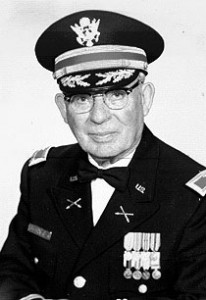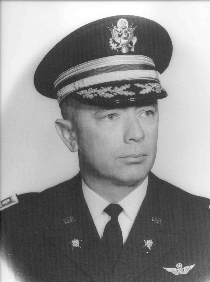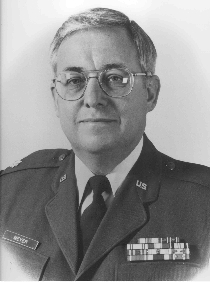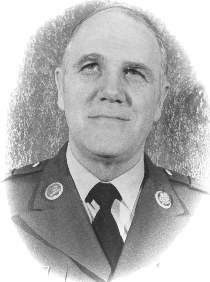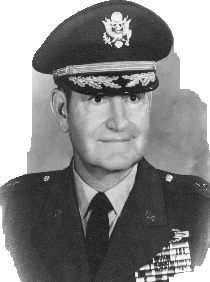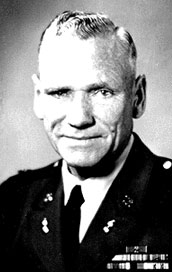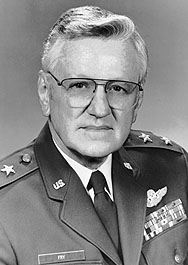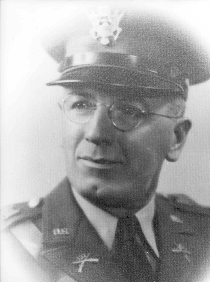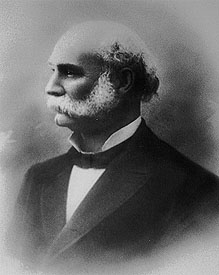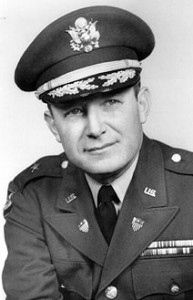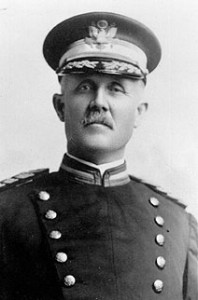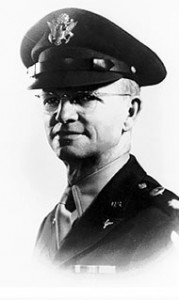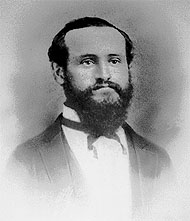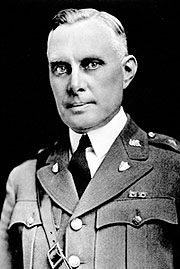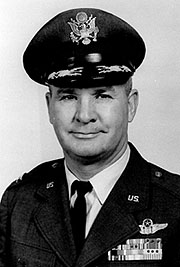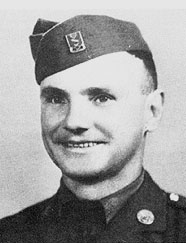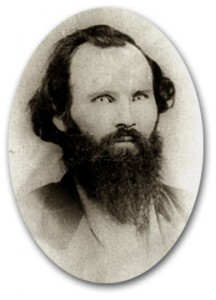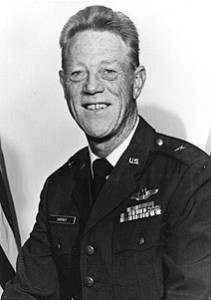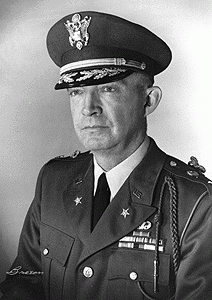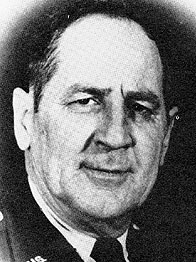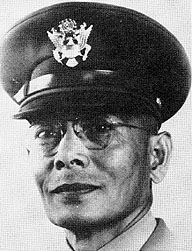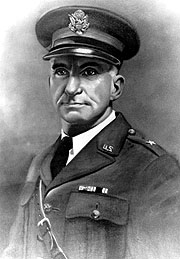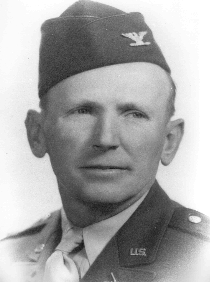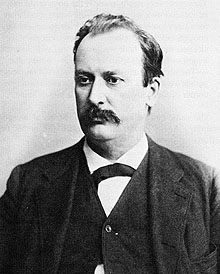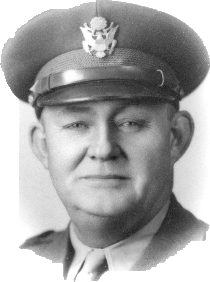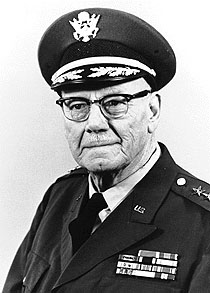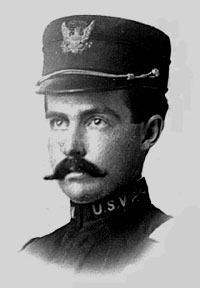Colonel T. J. Anderson,
Adjutant General State of Kansas:
Sir–I have the honor to submit herewith the following history of the military organization known as the 3d Kansas Battery, from the date of original formation to the expiration of its term of service:
The military organization known as the 3d Kansas Battery was originally recruited by Henry Hopkins and John F. Aduddell, of Leavenworth county, Kansas, in the latter part of 1861, ostensibly for the purpose of joining the military forces then being formed for the Indian, or New Mexican Brigade, under the auspices and management of Gen. James H. Lane. At Fort Leavenworth an organization was effected as a cavalry company, with Capt. Henry Hopkins and 1st and 2d Lieuts. John F. Aduddell and Oscar F. Dunlap, all of Leavenworth county.
The l2th Kansas Cavalry being in process of formation, this company was assigned to that organization, which was completed December 28th, 1861, and called the 9th Kansas Cavalry. On the 28th of February a new organization was formed by the consolidation of the original 2d Kansas Infantry with the 9th Infantry, forming the 2d Kansas Cavalry, in which this company was known and held position as company B.
This latter organization was perfected at Quindaro, Kansas, and shortly thereafter was ordered to Shawneetown, where it remained until the latter part of April, 1862, when it was ordered to Fort Riley, preparatory to a campaign then intended to be made on the Plains and in New Mexico, under command of Brig. Gen. Mitchell.
May 15th, 1862, the resignation of ofd Lieut. Oscar F. Dunlap was accepted, and on the same day Bradford S. Bassett, of Douglas county, was commissioned and mustered in his stead. The company was ordered into garrison at Fort Riley, Lieut. Bassett in command, Capt. Hopkins having some days previous been ordered to the command of a detachment of men of the 2d Kansas Cavalry, forming a battery of light artillery, and Lieut. Aduddell absent with leave.
On the 20th of June, 1862, the company marched from Fort Riley to Fort Larned, Kansas, under command of Lieut. Aduddell, arriving there June 24th, and remaining at that post until August 20, 1862, when company B, with companies A, C and D of the 2d Kansas Cavalry, under command of Maj. Fisk, marched to rejoin the regiment, stationed at camp.on Drywood Creek, 12 miles south of Fort Scott, arriving at that point September 23, 1862. Shortly thereafter, company B, with the regiment, made a scout of five days duration, under Col. Cloud, into the Osage country, returning and meeting, near Fort Scott, troops marching to reinforce Brig. Gen. Salomon at Sarcoxie, Mo., which expedition Col. Cloud’s command was ordered to join.
In obedience to this order, the command moved southward, passing through Lamar, and arriving at Sarcoxie October 3, ’63. Next morning pushed forward rapidly to meet the enemy at Newtonia, nine miles south. Participated in the engagement which followed, resulting in the defeat of the rebels. From thence moved gradually forward, through Neosho, Mo., into camp, five miles north of Keetsville.
On the 13th of October, company B, with the regiment, under command of Lieut. Col. Bassett, marched south on a scout to Cross Hollows, Ark., about sixteen miles in advance of the army, in the immediate presence of a superior force of the enemy, engaging in frequent skirmishes, and maintaining their position in that vicinity until the arrival of the main body of the army at Pea Ridge, Arkansas, October 20, 1862, and on the same day marched to meet the enemy, under Gen. Cooper, strongly posted at and near Maysville, Arkansas.
Company B was then, by order of Lieut. Col. Bassett, detached from the regiment and ordered to man the captured battery, and thenceforward was known as “Hopkins’ Kansas Battery.”
From camp on battle ground of Old Fort Wayne, the battery marched southward, engaging the enemy for the first time as artillerists at Cane Hill, Ark., November 28, 1862, driving him from that point across the Boston Mountains. For skilful maneuvering and accuracy of range, the officers and men received the compliments of their immediate commander, Lieut. Col. Bassett. (For detailed account, see Capt. Hopkins’ official report of this action).
Remained in camp at Cane Hill until December 3d, when the series of skirmishes commenced which preceded the battle of Prairie Grove, which was fought December 7th, 1862, between the combined forces of Brig. Gens. Blunt and Herron, of the U. S. army, and the so-called confederate force under Gen. Hindman, in which Hopkins’ Kansas Battery took an active part. (See Capt. Hopkins’ report).
In this engagement, 2d Lieut. B. S. Bassett, then A. A. A. G., 3d Brigade, was taken prisoner by the enemy, released on parole, and exchanged about two weeks afterwards at Cane Hill, (whither the Federal troops had marched after the battle), for a rebel officer of the same rank, by Lieut. Col. Thos. Moonlight, authorized by Gen. Blunt to negotiate the exchange of prisoners of war.
In the expedition to, and battle of, Van Buren, Hopkins’ battery took part, returning to Rhea’s Mills January 1st, ’63. Soon thereafter, the 1st Division, Army of the Frontier, was reformed into Brigades, and Hopkins’ battery, which had hitherto served in the 3d Brigade, commanded by Col. Cloud, was assigned to the 3d, or Indian Brigade, consisting of the 1st, 2d and 3d Indian regiments, a battalion of the 6th Kansas Cavalry and Hopkins’ battery, commanded by Col. Phillips.
The 3d Brigade remained on the frontier in Northern Arkansas, taking post at Fort Gibson, Cherokee Nation, about the 1st of March following. On the 27th of April an expedition was ordered by Col. Phillips to make an attack upon a body of the enemy posted at Weber’s Falls, twenty-five miles south, on the Arkansas River. Lieut. Bassett, in command of the battery, accompanted the expedition and took an active part in the the engagement which followed on the 28th of April, in which the rebels were completely routed.
About the middle of May following, a descent was made upon the herds of stock belonging to the Federal forces at Fort Gibson while grazing on the prairie adjoining the post, by three thousand rebels under Gen. Cooper. The fight lasted some hours, with varying success, when Lieut. Bassett, with one section of artillery, was ordered to the front, and materially aided in the defeat of the enemy, they being driven from the ground with considerable loss. (See report).
On the 26th of May, an attack was made by the same rebel force upon a large supply train en route from Fort Scott to Fort Gibson. The engagement lasted about six hours, in which the artillery, under command of Lieut. Bassett, took a prominent part, resulting in the defeat of the enemy with heavy loss.
Hopkins’ Kansas battery then remained at Fort Gibson until July 17th, 1863, when, under command of the Captain, it participated in the battle of Honey Springs, acquitting itself with honor in that engagement.
Soon thereafter it was assigned to another Brigade, commanded by Col. Thos. Bowen, 13th Kansas Infantry, remaining some weeks successively at Weber’s Falls, on the Arkansas River, and Scullyville, Choctaw Nation, marching to Van Buren, Ark., September 2, ’63, where a permanent camp was established.
October 1st, ’63, an order was issued by the War Department detaching company B from the 2d Kansas Cavalry, thereby causing a vacancy in that regiment, to be filled by the Governor of Kansas, and forming Hopkins’ battery into a permanent battery of light artillery, thereafter to be known as the “3d Kansas Battery.”
At the same time, Capt. Henry Hopkins was mustered as Maj. of the 2d Kansas Cavalry, and on the 26th of January, 1864, 1st and 2d Lieuts. Aduddell and Bassett were promoted respectively to Captain and 1st Lieutenant and 1st Sergeant Levinus Harris to 2d Lieutenant 3d Kansas battery.
In June following, Lieut. Bassett, with a detachment of sixty men, was sent to Little Rock, Arkansas, to receive a new and complete battery of three inch rifles, and remained there until September 13th, 1864, when, that officer having been disabled by accident, the detachment was assigned to duty with battery K, 1st Missouri Artillery, until January 1st, ’65, when that portion of the enlisted men whose term of service had expired, together with the commissioned officers, were ordered to proceed to Fort Leavenworth, Kansas, for muster out of service. Their muster out was effected January 19th, 1865, leaving forty-five enlisted men and four colored under cooks still in service, who were assigned to duty with the 2d Kansas battery (Capt. Smith’s) and discharged with that organization.
I have, Colonel, the honor to be,
Very respectfully,
Your obedient servant,
B. S. BASSETT,
Late lst Lieut. 2d Kan. Battery.
[OFFICIAL REPORTS.]
HEADQUARTERS HOPKINS’ BATTERY,
BOONSBORO, ARK., Dec. 1, 1862.
Sir–I respectfully submit the following report of the part the battery under my, command took in the engagement at Cane Hill, Ark., November 28, 1862:
In compliance with orders received November 28, 1862, the battery marched at 8 o’clock A. M. the following day, forming the rear of the column of the 2d Kansas Cavalry. After a march of twenty miles south in the direction of Cane Hill, Ark., I was ordered to bivouac, and move again at five o’clock the next morning.
Marching at the hour specified in the direction of Cane Hill for ten miles, the report of artillery was heard in the direction of the enemy. Moving as rapidly as the troops in front of me would permit, I was ordered to take position on an eminence one mile northwest of the town. Finding that the enemy had changed their position further south, I was ordered to occupy a point one half mile to the front. From this position I proceeded to shell the woods below and in my front, where a body of the enemy’s cavalry was moving. Immediately to the left a rebel battery was discovered posted on a high hill. I directed the fire of my guns upon it, dislodging and forcing it to retire. It appeared shortly afterward in the main road passing through the town. Again changing the direction of fire, shell were thrown with evident effect, the enemy retreating behind the hills to the left of Boonsboro. I was ordered to move in that direction, and obeyed as rapidly as the nature of the ground would permit; but owing to the steepness of the hills, could not take a position that would at all prove effectual in harrassing the enemy in his retreat.
1st Lieut John F. Aduddell commanded the right, and owing to the absence of Lieut. B. S Bassett, who was A. A. A. G. 3d Brigade, Sergeant McLane commanded the left section.
Considering the short period of time the battery has been in my possesion, the officers and men show a good degree of proficiency as artillerists, and in this engagement their conduct is entitled to much praise.
Respectfully,
Your obd’t, servant,
H. HOPKINS,
Captain 2d Kansas Cavalry,
Commaning Battery.
Lieut. S. K. Cross,
Act’g. Adj’t. 2d Kan. Cavalry.
HEADQUARTFRS HOPKINS’ BATTERY,
RHEA’S MILLS, ARK., Oct. 10, 1862.
Sir–I respectfully submit the following report of the part taken by the battery under my command in the battle of Prairie Grove, Ark., December 7, 1862, and the series of skirmishes preceding that action:
Information having been received on the 3d of December that the enemy was advancing in force from the south, the battery was ordered to take position in advance of the main line, where it remained until the morninig of the 7th, rendering some assistance in checking the enemy on the Newburg road.
About ten o’clock A. M., December 7, in obedience to orders, I moved the battery into the position assigned it in column, north to Rhea’s Mills, and thence, five miles east, to Prairie Grove, where the 2d and 3d Divisions, Army of the Frontier, under Brig. Gen. Herron, were engaging the enemy under Gen. Hindman, who, during the night of the 6th; had flanked the 1st Division, commanded by Brig. Gen. Blunt, passing twelve miles to the left and rear.
Having been ordered into position in an open field on the left of the 1st Division, I opened fire with shot and shell on the enemy, occupying a position on a densely wooded rise of ground, and drove him back. At this time, the only support for my battery was a detachment of dismounted cavalry, not exceeding twenty-five, under command of’ Lieut. Mitchell, 2d Kansas Cavalry. Shortly afterwards the enemy again advanced in greater force, moving obliquely along our front, threatening the left flank. In conjunction with Rabb’s battery, which was some distance on my right, I opened a heavy fire again upon the enemy, and was supported by a regiment of Iowa troops which had been driven back by the advancing column. The enemy appeared to be massing his forces for a charge, and just at sunset moved impetuously forward, but by well directed and rapid discharges of spherical case and canister, their advance was checked, and the battery slowly retired, firing with prolonges attached.
Night coming on firing ceased, and the troops bivouacked on the field. The next morning it was known that the enemy had fallen back. By good fortune, there were no casualties in my command.
Respectfully,
Your obd’t, servant,
H. HOPKINS,
Captain 2d Kansas Cavalry,
Commanding Battery.
Lieut. S. K. Cross,
Act’g. Adj’t. 2d Kan. Cavalry.
HEADQUARTERS HOPKINS’ BATTERY,
FORT GIBSON, May 18, 1863.
Sir–I have the honor to submit the following report of the action of Hopkins’ battery in the engagement of May 14, 1863, between Federal forces commanded by Col. Wm. A. Phillips and rebel troops under Gen. Cooper:
About 9 o’clock A. M., May 14th, ’63, information was sent me by Col. Phillips, commanding, that the rebel force under Gen. Cooper, which for some days had been assuming a more than usually hostile attitude, had made an attack in force upon the herders and their guards, with a view to capturing the government herds of animals then grazing on the prairies surrounding the post, and orders to bring in at once my horses from pasture and prepare for action. I assembled my command, placed my guns in position and awaited further orders. Leaving me inside of the fort, Col. Phillips, with most of his available force, moved forward to meet the enemy, distant about four miles. At eleven o’clock, I received orders to move with all possible haste to the front with one section of artillery. Leaving one section under command of First Sergeant Harris, with the other I proceeded at a gallop to the scene of action. Arriving, I went into position on a commanding eminence about three hundred yards from the enemy’s line of battle, and opened fire upon them with canister and spherical ease with good effect.
With redoubled efforts the enemy attempted in vain to withstand our combined assault, and retreated, leaving us in possession of the field. The battery was engaged about one hour, and absent from the fort about three hours. The men of my command behaved with coolness and bravery under a heavy fire. Much credit is due them.
Respectfully,
Your Obd’t, servant,
B. S. BASSETT,
Lieut., comd’g. Hopkins’ Battery.
Lieut. William Gallaher,
A. A. A. G, 3d Brig., Army of the Frontier.
(Source: Report of the Adjutant General of the State of Kansas, 1861-’65. Topeka, Kansas: 1896 reprint. Transcribed by Bryce Benedict, Civil War Round Table of Eastern Kansas.)

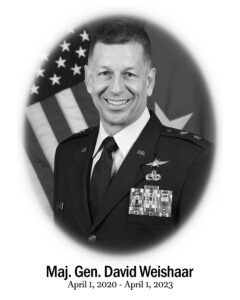 Maj Gen David Weishaar
Maj Gen David Weishaar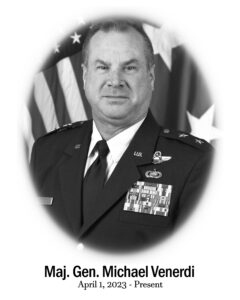
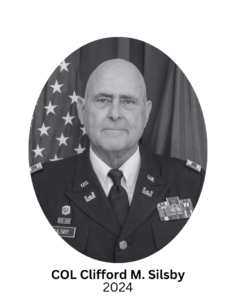
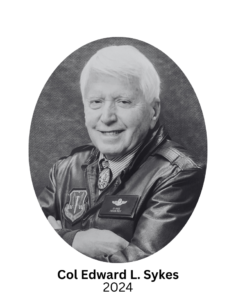
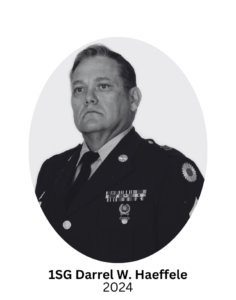 First Sergeant Darrel W. Haeffele was born on September 25, 1940, in Falls City, Nebraska. He graduated from Atchison High School in 1958. He attended Concordia College in Seward, NE for two years before starting a career in retail.
First Sergeant Darrel W. Haeffele was born on September 25, 1940, in Falls City, Nebraska. He graduated from Atchison High School in 1958. He attended Concordia College in Seward, NE for two years before starting a career in retail.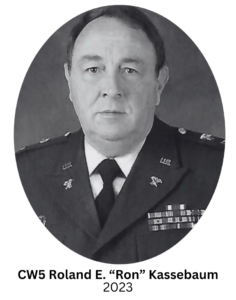 CW5 Roland E. “Ron” Kassebaum was born on February 21, 1946 in Deshler, Nebraska. He graduated from Hebron High School, Hebron, Nebraska in 1964. He attended Fairbury Junior College, Fairbury, Nebraska and the University of Nebraska, Lincoln, Nebraska, and received a Bachelor of Science Degree from the University of the State of New York in 1991. He later attended Liberty University, Lynchberg, Virginia, for courses in accounting and Allen County Community College, Iola, Kansas, for a course in Business Law.
CW5 Roland E. “Ron” Kassebaum was born on February 21, 1946 in Deshler, Nebraska. He graduated from Hebron High School, Hebron, Nebraska in 1964. He attended Fairbury Junior College, Fairbury, Nebraska and the University of Nebraska, Lincoln, Nebraska, and received a Bachelor of Science Degree from the University of the State of New York in 1991. He later attended Liberty University, Lynchberg, Virginia, for courses in accounting and Allen County Community College, Iola, Kansas, for a course in Business Law.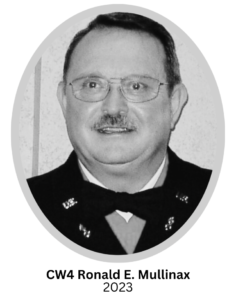 Chief Warrant Officer Four Ronald E. Mullinax was born on August 25, 1946, in Norton, Kansas to Earl and Mary Posson. He was adopted by John and Ada Mullinax. He grew up in Lenora, Kansas, graduating from Lenora Rural High School in 1965. After completing a Denver Automotive Institute training program, Ron worked at Look Body Shop in Norton until 1968.
Chief Warrant Officer Four Ronald E. Mullinax was born on August 25, 1946, in Norton, Kansas to Earl and Mary Posson. He was adopted by John and Ada Mullinax. He grew up in Lenora, Kansas, graduating from Lenora Rural High School in 1965. After completing a Denver Automotive Institute training program, Ron worked at Look Body Shop in Norton until 1968. CCMSgt Valerie D. Benton was born on Dec. 10, 1959 in Racine, Wisconsin, where she spent her childhood. She graduated from Washington Park High School in 1978. Soon after graduation she enlisted in the U. S. Air Force and headed to Basic Training at Lackland AFB, Texas in December of 1978. After completion of Basic training, she attended Technical Training at Lowry AFB, Colorado, and graduated as a Food Service Specialist.
CCMSgt Valerie D. Benton was born on Dec. 10, 1959 in Racine, Wisconsin, where she spent her childhood. She graduated from Washington Park High School in 1978. Soon after graduation she enlisted in the U. S. Air Force and headed to Basic Training at Lackland AFB, Texas in December of 1978. After completion of Basic training, she attended Technical Training at Lowry AFB, Colorado, and graduated as a Food Service Specialist.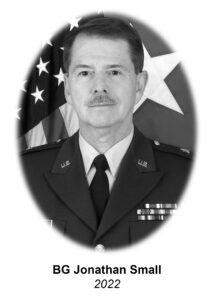 Brigadier General Jonathan P. Small served as The Adjutant General of Kansas from November 1, 2003 to January 4, 2004, culminating a 35-year military career as a distinguished attorney, community leader, citizen-soldier, and military leader. He served as Assistant Adjutant General-Army from 1999 to 2003, and as Commander of the Land Component for the Joint Force Headquarters-Kansas.
Brigadier General Jonathan P. Small served as The Adjutant General of Kansas from November 1, 2003 to January 4, 2004, culminating a 35-year military career as a distinguished attorney, community leader, citizen-soldier, and military leader. He served as Assistant Adjutant General-Army from 1999 to 2003, and as Commander of the Land Component for the Joint Force Headquarters-Kansas. General James H. Lane was a militia leader during the Bleeding Kansas period, the commander of the Kansas “Jayhawker” Brigade during the Civil War, and was one of the first United States Senators from Kansas.
General James H. Lane was a militia leader during the Bleeding Kansas period, the commander of the Kansas “Jayhawker” Brigade during the Civil War, and was one of the first United States Senators from Kansas.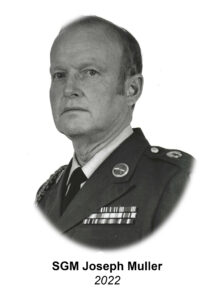 Sergeant Major Joseph T. “Jody” Muller was selected for the Kansas National Guard Hall of Fame for his exceptional service as a citizen soldier in the Kansas National Guard for over 41 years.
Sergeant Major Joseph T. “Jody” Muller was selected for the Kansas National Guard Hall of Fame for his exceptional service as a citizen soldier in the Kansas National Guard for over 41 years.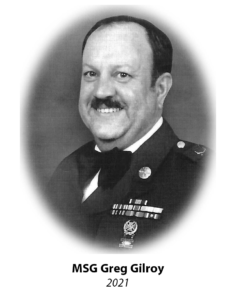 Master Sergeant Greg Gilroy was born on July 25, 1947 at Ottawa, Kansas. He was a lifelong resident of Ottawa, graduating from Ottawa High School in 1965. He then attended Emporia State University during the 1965-66 school year.
Master Sergeant Greg Gilroy was born on July 25, 1947 at Ottawa, Kansas. He was a lifelong resident of Ottawa, graduating from Ottawa High School in 1965. He then attended Emporia State University during the 1965-66 school year.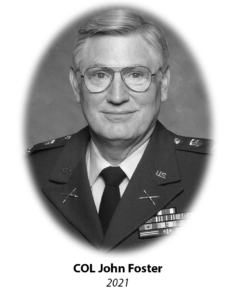
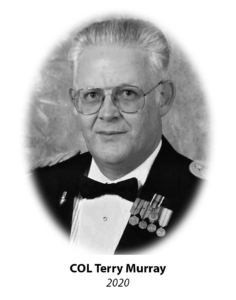
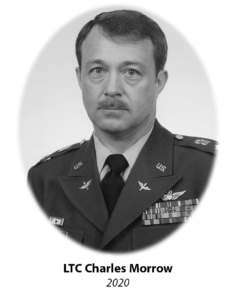

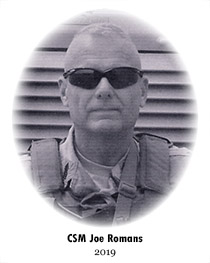
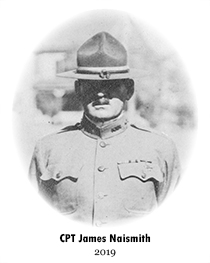

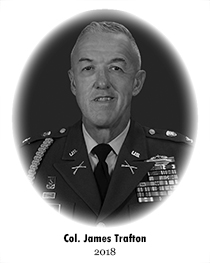
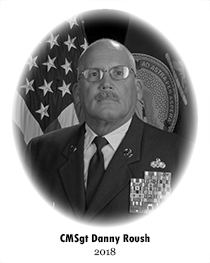
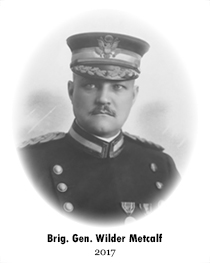
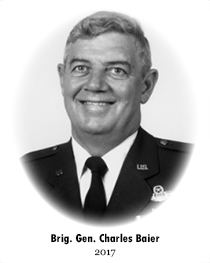
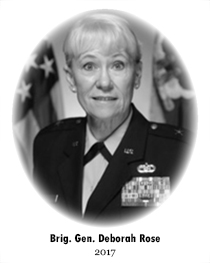 Brigadier General Deborah Rose entered military service with a direct commission into the United States Air Force Nurse Corps in March 1983, assigned to the 184th Tactical Fighter Group. She transferred to the 190th Clinic in December 1985. In October 1990, she deployed to Jeddah, Saudi Arabia, where she served in an Air Transportable Hospital during Desert Shield. In February 1991, she was activated and deployed to Offutt AFB, Nebraska, assigned to the hospital.
Brigadier General Deborah Rose entered military service with a direct commission into the United States Air Force Nurse Corps in March 1983, assigned to the 184th Tactical Fighter Group. She transferred to the 190th Clinic in December 1985. In October 1990, she deployed to Jeddah, Saudi Arabia, where she served in an Air Transportable Hospital during Desert Shield. In February 1991, she was activated and deployed to Offutt AFB, Nebraska, assigned to the hospital.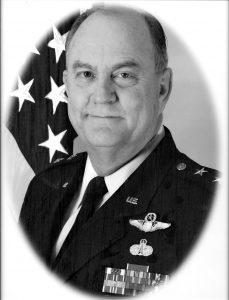
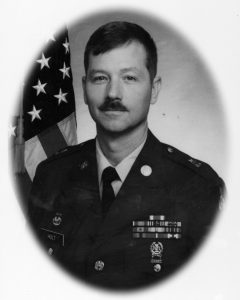 Sergeant Major Lynn E. Holt built his distinguished Kansas Army National Guard career developing strength, retaining Soldiers and insuring Soldiers received proper training. He served from the Detachment through State level. He is known for his ability to recognize Soldier needs at all levels. The same care he felt for Soldiers carried over into his community activities. SGM Holt’s passion for people and their needs exemplifies his true character. He devoted his entire adult life to the betterment of our nation, our state and the Kansas National Guard.
Sergeant Major Lynn E. Holt built his distinguished Kansas Army National Guard career developing strength, retaining Soldiers and insuring Soldiers received proper training. He served from the Detachment through State level. He is known for his ability to recognize Soldier needs at all levels. The same care he felt for Soldiers carried over into his community activities. SGM Holt’s passion for people and their needs exemplifies his true character. He devoted his entire adult life to the betterment of our nation, our state and the Kansas National Guard.